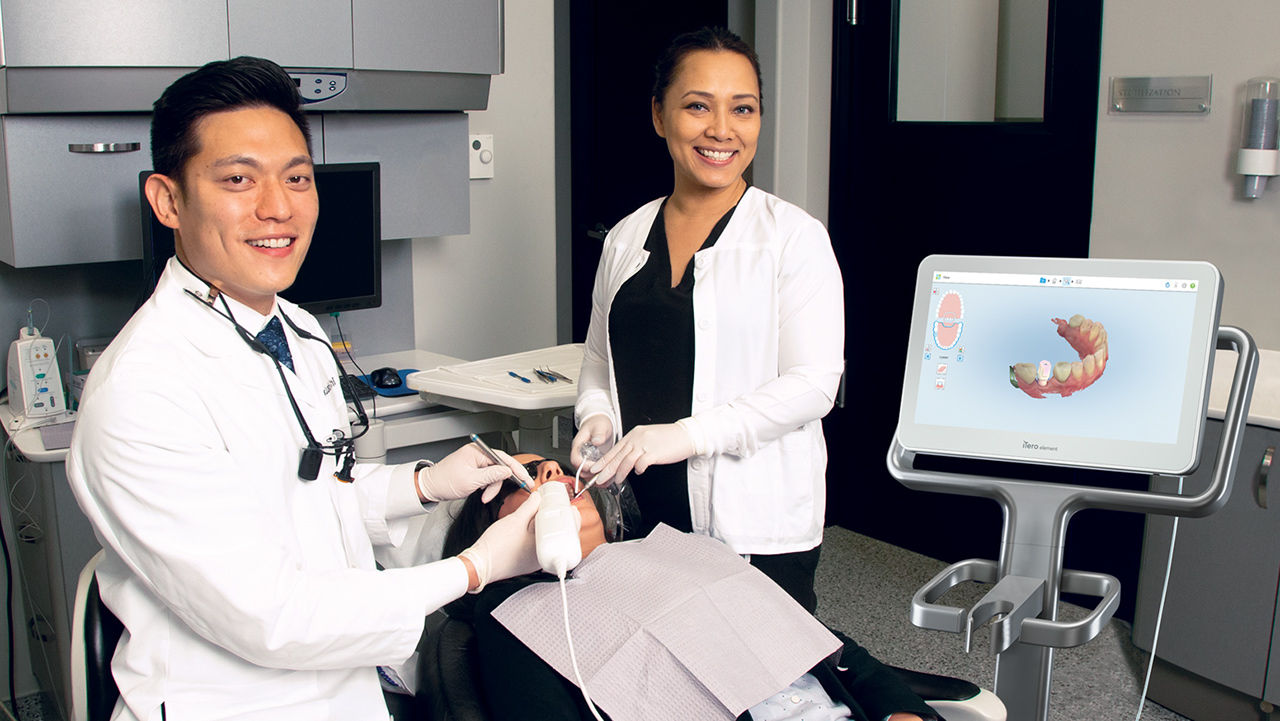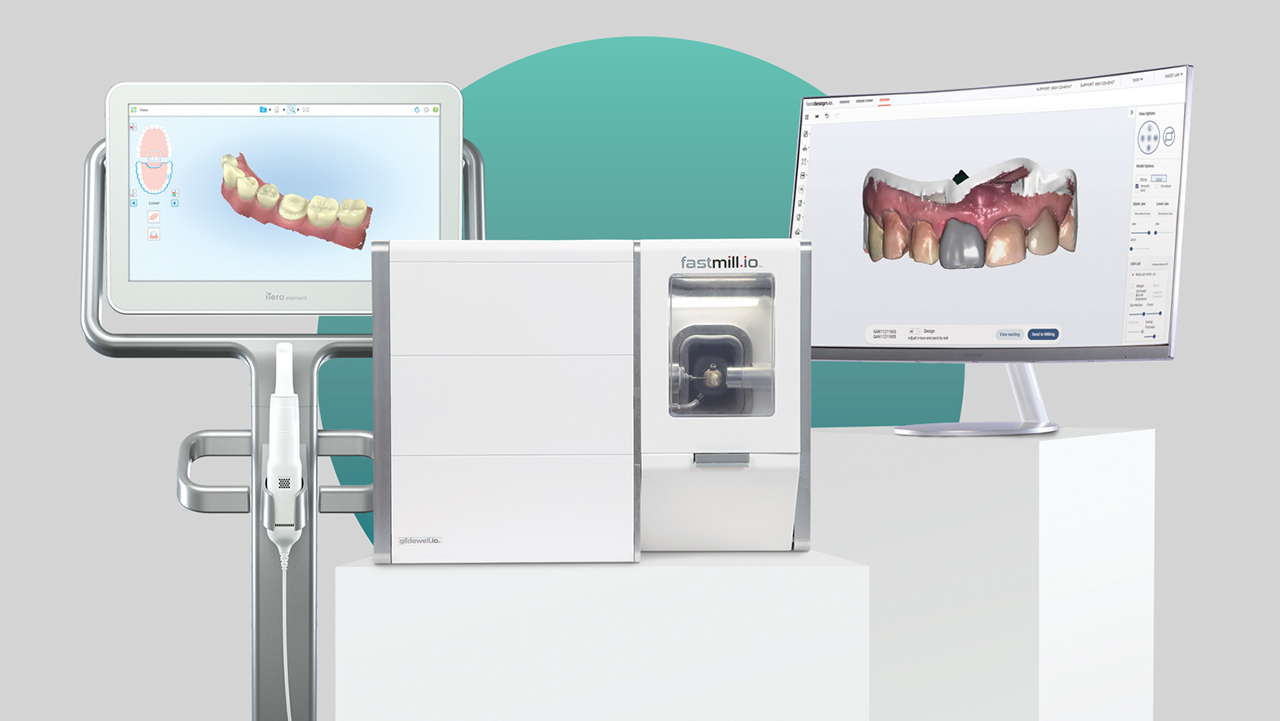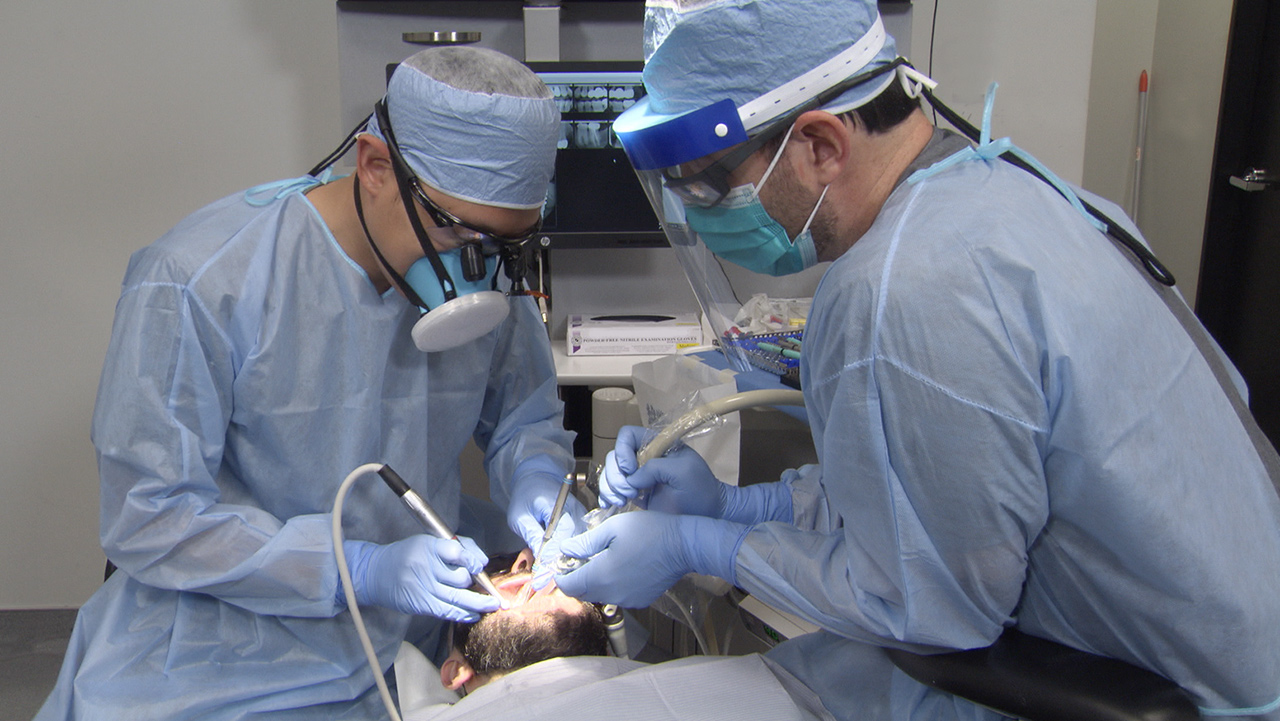2201 Dupont Dr., Irvine, CA 92612
© 2025 Glidewell. All rights reserved.
800-854-7256 USA
Dr. Justin Chi discusses how digital dental technology helps alleviate exposure risk in the practice.

Even before the onset of COVID-19, digital technology was well on its way to becoming a new standard in the dental industry. Now, with the increased need for stringent safety protocols brought on by the pandemic, the inherent risk-minimizing factors of the latest digital tools have made these technologies even more appealing to doctors.
What makes digital technology such an important factor in the future landscape of the industry? As director of clinical technologies at Glidewell, Justin Chi, DDS, teaches webinars and CE courses for doctors interested in learning how to use and integrate digital tools into their practices. We asked him for some insight on the crucial intersection where technology meets COVID-19.
Brenda Paro: What is the first thing you want to be sure doctors know regarding digital dental technology and how it plays a role in the fight against COVID-19 risk?
Dr. Justin Chi: Since the onset of COVID-19, dental practices have had to adopt more stringent protocols to help reduce the chances of contamination and exposure, both of which are a concern for patients and staff. Beyond the usual methods of protection used in the clinic, like PPE and aerosol control, doctors should also know that adopting digital technology not only keeps them competitive but also helps improve the safety of the treatment process immensely.
While integrating a full in-office digital system is an excellent move, of course, even just switching one aspect of the typical workflow to a digital process will help make a difference. If doctors hadn’t yet started using digital tools prior to the pandemic and aren’t sure they’re ready to make a major change to anything at this time, they need to know that something as simple as switching from traditional impressions to digital scanning is a great way to minimize risk.
BP: So rather than an all-or-nothing approach, adding digital tools can be an incremental process that improves safety amid COVID-19.
JC: That’s correct. The act of taking a digital impression reduces the risk of cross-contamination, since the scanner wand can easily be sterilized. With traditional impressions, there is inherently increased risk when you consider the large number of items required to transfer the patient’s impression to the lab: the impression tray, the PVS material, the bite registration, any materials and devices used in the clinic to make these things, all the way through the packaging process to ship it out. Cutting out those multiple steps dramatically reduces the chances of something along the line causing contamination.

Dr. Chi uses an intraoral scanner to take digital impressions in this 2018 photo. Scanning is a simple way to minimize risk of exposure in the practice.
BP: Less time spent with someone’s hands in their mouths and no need for impression material sound like big benefits of digital scanning, COVID-19 or not.
JC: Absolutely. The fact that digital technology can enable doctors to provide a treatment solution for the patient in one visit or one day is revolutionary for the practice and the industry, outside of the issues raised by the pandemic. But obviously, with COVID-19 in the mix, simply going to the dental office is a risk for patients, and there’s an equal risk for the dental practice and the team in bringing in a patient.
BP: Dental practices were still providing services during quarantine, at least for emergency situations — is that correct?
JC: Everything shut down back in March when quarantine began, but dental services are considered essential, so doctors continued to offer emergency treatment during that time. That’s why exploring ways to do it as safely as possible is so important. If you’re offering these services when doing so is high-risk, being able to treat the patient in one day instead of three days obviously reduces the risk for everyone. So it’s a tremendous benefit for doctors to have that ability.
BP: Less contact and less time in the office, then, sound like the major selling points of digital technology in terms of COVID-19.
JC: Absolutely. That same concept — the limiting of things coming in and out of the practice — applies to other types of digital technology in a larger sense, too. For example, a chairside milling system, like the glidewell.io™ In-Office Solution, means that you’re milling and delivering crowns in-office. This not only minimizes risk of exposure and decreases treatment times, but also allows the entire treatment process to stay in-house. If you’re sending your traditional impressions to a lab, and having the lab send things back to you, there’s elements coming into the environment that may have been contaminated and are out of your control.

The glidewell.io In-Office Solution allows clinicians to design, mill and deliver single-unit restorations without the need to send materials to labs or bring patients back for second appointments.
BP: I’m assuming that, with all of these benefits in terms of safety protocols and minimized risk, you’re seeing some doctors in the webinars and courses who are speeding up their timelines for when they want to get started with digital tools.
JC: Yes, many of them are giving digital technology a closer look because of COVID-19. The courses we offer are about how to use and integrate these digital technologies, and the doctors are there in the first place because there’s always that learning curve with anything so new and different. And usually they would set their own pace in terms of bringing the technology into their practices, as it can seem daunting to change your office structure and workflow to accommodate for this type of thing all at once, understandably. But in the new context of this pandemic, I discuss the safety aspects of digital within the courses, and many of the doctors I’ve worked with have made the decision to go ahead with digital sooner than they would have otherwise.
BP: What potential future considerations do you foresee doctors facing in this unique time period?
JC: I think the main thing is the giant uncertainty we’re all facing in terms of what comes next, and how we’ll navigate that as doctors. If another shutdown occurs, of course dentists will still need to be available for emergency treatments. And that’s where digital technology and in-office crowns would become even more important. Let’s say the normal supply chains become disrupted, the shipping services stop running, or the labs are forced to shut down. With digital technology in your practice, you would still be able to offer treatment to your patients.
Digital has a long list of benefits that give you accuracy and predictability on a regular basis, and those things become even more important in a situation like COVID-19. Minimizing surprises that can impact your patients and avoiding recalls or the need to reschedule appointments prevents inconvenience and inefficiencies that not only affect your patients, but also can affect your practice and its ability to manage things like exposure risk. Digital is also a differentiator: It identifies a toolset that will lead you to other potential services you can offer, and other areas of dentistry to explore.
In situations like the one we’re facing now, and the ones we may face in the future, it’s particularly important to note that digital technology gives you the opportunity to be more self-reliant within your practice. You’re no longer outsourcing a very important part of providing treatment. It all happens in-house, and it puts the control in your hands.

Providing essential services to patients while minimizing risk will be a key part of dentistry post-pandemic. Shown here, Dr. Chi and Will Schmidt, RDA, wear PPE during a chairside procedure.
BP: That sounds exciting, for lack of a better word to use, even though it’s occurring during such a challenging time.
JC: One positive right now is hearing from dentists who say they’re busier than ever. Patients are not hesitant to come in. We as doctors are offering an essential service: The procedures we perform as dentists are to improve someone’s health and make their lives better. And continuing to have the ability to do that safely is very important.
Moving forward, regardless of what happens next, there will definitely be a lot of emphasis on shortening treatment times and minimizing exposure risks. So I think you’ll continue to see increased discussion of digital treatment in dentistry. There’s no better way to be efficient and improve communication with your patients while keeping everyone as safe as possible.
Send blog-related questions and suggestions to hello@glidewell.com.


